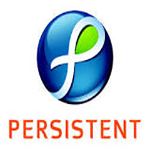Azure IOT : Solving the problem of variety across devices
IOT has always been plagued with the problem of the devices at the lower end not being uninformed.
No Vendor is able to standardize the platform and the devices connected to such platform because the hardware vendors to reduce the cost of development come out with there own shortcuts to solve high volume low-cost paradigm.
Azure IOT Stack try to solve this problem by providing a uniform stack which can cater to multiple devices by bringing a baseline SDK which can be supported with minimalistic efforts.
IOT Hub detecting anamoly code in javascript
/*jslint node:true, vars:true, bitwise:true, unparam:true */
/*jshint unused:true */
// Leave the above lines for propper jshinting in the Intel XDK tool
var five = require(‘johnny-five’);
var Edison = require(‘edison-io’);
var device = require(‘azure-iot-device’);
var Http = require(‘azure-iot-device-http’).Http;
var Oled = require(‘oled-js’);
var font = require(‘oled-font-5×7’);
// Set the connection string and device ID for the IoTHub connection
var connectionstring = ‘<<Enter your device connection string>>’;
var deviceID = ‘<<Enter your deviceID>>’; // must match the deviceID in the connection string
var messageFromIoTHub = “”;
var messageDisplayCounter = 0;
var oled;
function oledPrintText (text) {
oled.clearDisplay();
// display text
oled.setCursor(0, 0);
oled.writeString(font, 1, text, 1, true);
}
function oledInit() {
// if it was already scrolling, stop
oled.stopScroll();
// clear first just in case
oled.update();
// make it prettier
oled.dimDisplay(true);
}
function oledDrawCircles() {
// create concenctric rectangle outlines
oled.clearDisplay();
//calc how many squares we can fit on the screen
var padding = 2;
var square_count = ((oled.WIDTH / 2 ) / (padding * 2) ) – 1;
for(var i = 0; i < square_count; i ++){
var x = ((i + 1) * padding);
var y = ((i + 1) * padding);
var w = oled.WIDTH – (x * padding);
var h = oled.HEIGHT – (y * padding);
oled.drawRect(x, y, w, h, 1, false);
}
oled.update();
}
function oledDisplayValues(deviceid, x, y, z){
oled.clearDisplay();
if ((messageFromIoTHub != “”) && (messageDisplayCounter < 5))
{
// Display message from IoTHub on screen
messageDisplayCounter++;
oledDrawCircles();
} else {
// Reset counter and message buffer
messageDisplayCounter = 0;
messageFromIoTHub = “”;
// Display actual data on screen
oled.setCursor(0, 0);
oled.writeString(font, 1, deviceid, 1, true);
oled.setCursor(0, 8);
oled.writeString(font, 1, “connected to”, 1, true);
oled.setCursor(0, 17);
oled.writeString(font, 1, “Azure IoT Hub”, 1, true);
oled.setCursor(0, 26);
oled.writeString(font, 1, “x=” + x , 1, true);
oled.setCursor(0, 36);
oled.writeString(font, 1, “y=” + y , 1, true);
oled.setCursor(0, 47);
oled.writeString(font, 1, “z=” + z , 1, true);
}
}
// instantiate the IoT Hub client and board
var iotHubClient = new device.Client(connectionstring, Http);
var board = new five.Board({
// Note the parameter here to adapt the Edison object to the Xadow breakout board we are using. Change if you are using another one.
io: new Edison(Edison.Boards.Xadow)
});
// when board is ready, start a couple tasks: one listening for notifications from IoTHub, the other one sending telemetry data from the vibration sensor
board.on(“ready”, function () {
/* setup the accelerometer */
var accelerometer = new five.Accelerometer({
controller: “ADXL345”
});
var oledopts = {
width: 128,
height: 64,
address: 0x3C
};
oled = new Oled(board, five, oledopts);
oledInit();
oledPrintText(‘Device Ready’);
iotHubClient.on(‘message’, function(msg) {
messageFromIoTHub = msgData;
console.log(‘Received data: ‘ + messageFromIoTHub);
iotHubClient.complete(msg, function (err, res) {
if (err) console.log(‘complete error: ‘ + err.toString());
if (res && (res.statusCode !== 204)) console.log(‘complete status: ‘ + res.constructor.name);
});
});
var sendInterval = setInterval(function() {
oledDisplayValues(deviceID, accelerometer.x, accelerometer.y, accelerometer.z);
var payload = “{\”deviceid\”:\”” + deviceID + “\”,\”x\”:” + accelerometer.x + “, \”y\”:” + accelerometer.y + “, \”z\”:” + accelerometer.z + ” }”;
var message = new device.Message(payload);
console.log(“Sending message: ” + message.getData());
iotHubClient.sendEvent(message, function (err, res){
if (!err){
console.log(‘send status: ‘ + res.constructor.name);
} else {
console.error(‘send error: ‘ + err.message);
}
});
}, 1000);
});


































